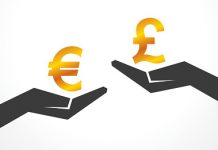EUR/USD continues to trade quietly. In the Friday session, the pair is trading at 1.1784, down 0.10% on the day. The euro has lost 1.4% this week. On the release front, German inflation indicators were stronger than expected. PPI and WPI both improved to 0.5%, beating their estimates. In the eurozone, the numbers were mixed. The current account surplus narrowed to 32.0 billion, short of the estimate of EUR 35.1 billion. The trade balance surplus edged up to EUR 21.1 billion, above the forecast of EUR 20.7 billion. In the U.S, there are no economic indicators to wrap up the week.
There was welcome news on the inflation front, as German indicators showed strong improvement in April. PPI improved from 0.1% in March to 0.5% in April, and WPI followed the same trend, climbing from 0.0% to 0.5%. These figures come on the heels of German CPI, which fell from 0.4% to 0.0%. The eurozone economy continues t0 perform well in 2018, but inflation has lagged behind and remains well below the ECB inflation target of around 2 percent. Weak inflation levels could have a significant impact on ECB fiscal policy, as policymakers may have to consider extending its stimulus scheme, which is scheduled to run until September. At the same time, higher oil prices could boost weak inflation levels. Brent crude hit $80 earlier this week, and the upward trend could continue as renewed U.S sanctions against Iran could hamper its oil exports.
The US economy continues to fire on all cylinders in 2018. The Trump tax cuts and increase in government spending have boosted growth, and inflation is moving closer to the Federal Reserve target of 2 percent. These developments, although positive, have given rise to a policy debate in the Fed with regard to the pace of rate hikes. Earlier in the week, San Franciso Fed President John Williams said that only a few more hikes are needed before the economy can manage on its own without the Fed tightening or easing policy. This “neutral rate’ policy is being disputed by other Fed policymakers, who believe that the U.S. economy has shifted into a higher phase, warranting rate cuts once economic indicators point to a hot economy. This split over monetary policy could intensify in the second half of 2018k if the economy continues to improve












